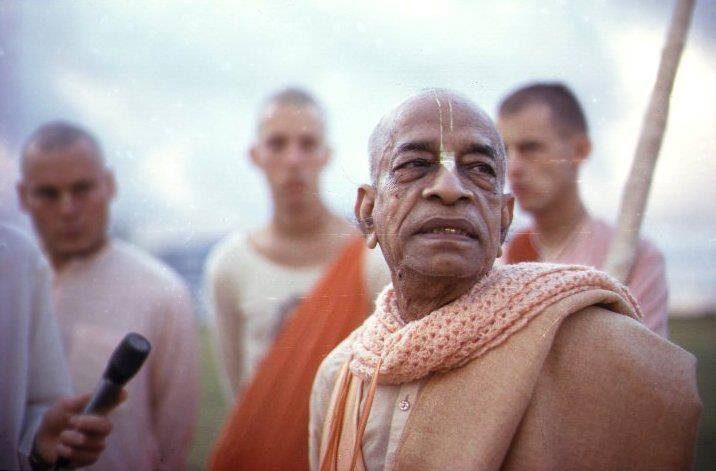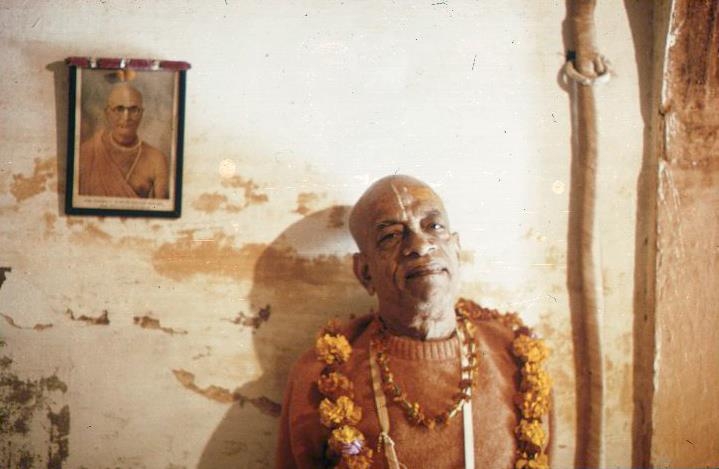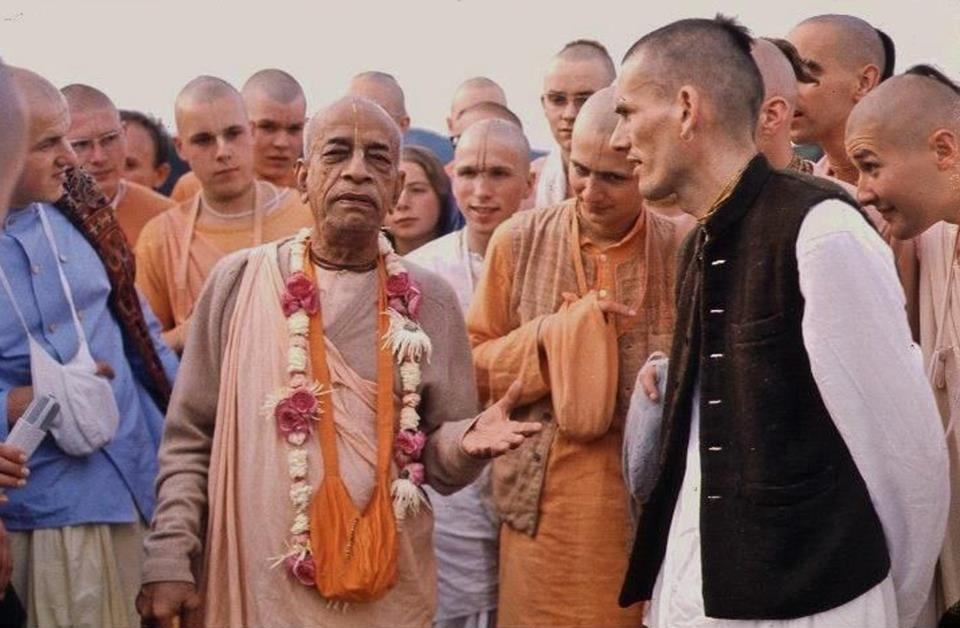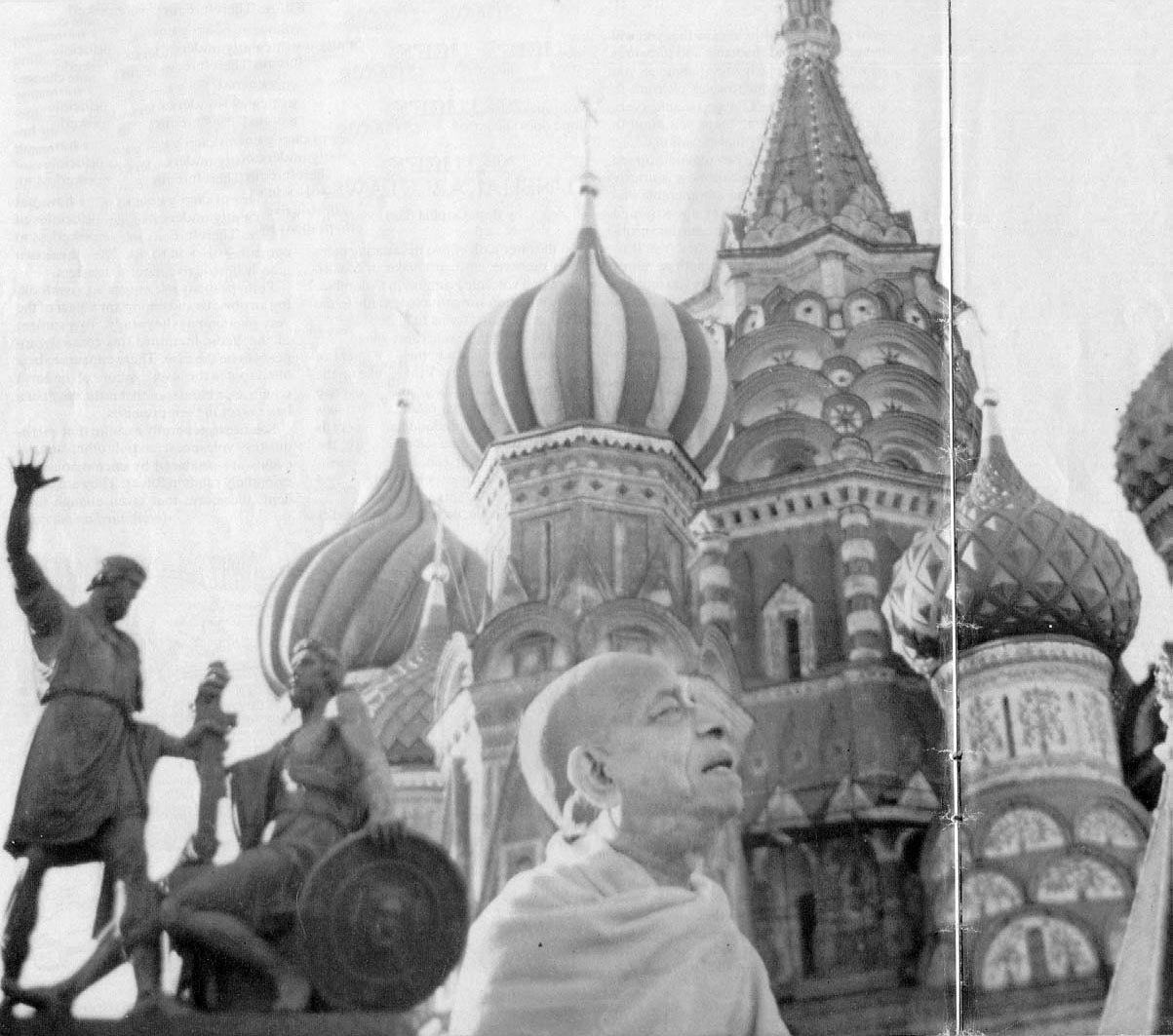A.C. Bhaktivedanta Swami Prabhupada
The outstanding Indian religious figure and enlightener Abhay Charanavarinda Bhaktivedanta Swami, also known as Srila Prabhupada, , was born on September 1, 1896 in Calcutta in a family of Vaishnavas devotees of Krishna.
Srila Prabhupada is the author of more than 80 theological works and translations from Sanskrit into English and detailed commentaries in the spirit of the Bengali Vaishnavism tradition of many Vedic scriptures such as Bhagavad-gita, Srimad Bhagavatam (Bhagavata-purana), Upadesamrita (Nectar of Instructions) Sri Isopanisad, Bhakti-rasamrta-sindhu (Nectar of Devotion) and many others, as well as Caitanya-caritamrita, the biography of Sri Chaitanya in Bengali.

In the early 1920s, Srila Prabhupada met Bhaktisiddhanta Saraswati (1874-1936), his future spiritual master. Bhaktisiddhanta Saraswati, an outstanding scientist, religious figure and founder of sixty-four mathas (temples, temple communities) in India, liked the educated young man, and persuaded him to devote his life to spreading spiritual knowledge in the countries of the Western world. Abhay became a follower of Bhaktisiddhanta Saraswati, and in 1933 received a spiritual initiation from him.
Shortly before Bhaktisiddhanta Saraswati left this world in 1936, Srila Prabhupada received from him the instruction to translate Vaisnava literature into English and preach the teachings of Sri Caitanya in the West. However, Srila Prabhupada did not follow this instruction immediately.
In 1959, Srila Prabhupada took sannyasa, becoming a renounced monk, which allowed him to concentrate exclusively on translating scriptures and preaching sankirtana (spreading the glory of the holy name of Krishna), initiated more than 500 years ago by Sri Caitanya. In the temple of Radha-Damodara in sacred Vrndavana, he finally began the main work of his life-the multivolume translation from Sanskrit into English of 18,000 verses (shlokas) of Srimad Bhagavatam, or Bhagavata-purana, and detailed interpretations of these texts. In addition, he wrote a pamphlet "Easy Journey to Other Planets", opening entirely new horizons for the wide preaching of the Vedic God-centered picture of the world.

For many years he had been preparing himself for his future mission, carefully studying the Vaishnava spiritual literature, and only in 1965, already in his old age, went to America, the center of the consumer lifestyle.
On August 13, 1965, he boarded the weather-beaten Indian cargo ship Jaladuta with 40 rupees in his purse and several boxes of Srimad Bhagavatam in English. A few days later he turned 69 years old. During the voyage, Prabhupada experienced two heart attacks, but he was still determined to carry out the instruction of his spiritual master and remind the people of the West of God.
He came to the citadel of the materialistic world, not knowing anyone there, practically without means of subsistence. He had no money, no friends, no followers, no youth, no good health, or even a clear idea of how to achieve his bold goal of acquainting the Western world with the spiritual wisdom of the Vedas.

After coming to New York in September 1965, Prabhupada fought alone for a whole year to establish a movement that would preach the consciousness of God. He lived very modestly and used every opportunity to tell people about Krishna. Gradually, he managed to get a few people interested in his teaching. So the Lord responded to Prabhupada's passionate desire to preach the doctrine of the soul, sending him both the first disciples and the first opportunities for preaching.
In 1966, Prabhupada founded the first world Vaishnava organization, which he called the International Society for Krishna Consciousness (ISKCON). Gradually, the number of followers of Srila Prabhupada grew, the first Vaishnava temples were opened in the West. During the following years, Prabhupada travelled the Earth 12 times, preaching the teachings of the Bhagavad-gita in various countries.
In 1971, Srila Prabhupada visited the Soviet Union. Although there could be no open preaching, after the visit of Srila Prabhupada in Moscow, the first Russian Vaisnava appeared - Anatoly Pinyaev (Anantashanti das), who, at the risk of his freedom, began preaching the teachings of Sri Chaitanya in Moscow and other cities of the USSR. So the Society for Krishna Consciousness appeared in our country.

From 1965 to 1977 Srila Prabhupada brought Krishna's teachings to almost all the major cities of the world. His last years Srila Prabhupada spent in constant preaching trips, while at the same time he directed the society created by him and worked on the comments to the Srimad Bhagavatam and Caitanya-caritamrita.
Srila Prabhupada opened over 100 temples on different continents, and he also started the construction of a unique spiritual city in Mayapur (India), which is now continued by his disciples and followers. He wrote and published more than fifty volumes of books, which during his lifetime were translated into twenty-eight languages and sold out in tens of millions of copies. For today, his books have been translated into more than 70 languages of the world. Srila Prabhupada gave thousands of lectures, wrote thousands of letters and conducted thousands of conversations with his students, admirers and skeptics. His work was recognized by renowned scientists and public figures who highly appreciated Srila Prabhupada's contribution to the development of religion, philosophy and culture.

In India, Srila Prabhupada is considered a saint, his name is given to the streets in some cities, as well as hospitals, educational institutions and charitable organizations. In his honor, on the day of his 100th anniversary in 1996, a jubilee state postage stamp with his image was issued. Samadhi (mausoleum) of Srila Prabhupada is in the sacred Vrndavana, where he opened the largest and one of the most popular temples of Krishna, Krishna-Balaram Mandir.
Bhaktivedanta Swami Prabhupada left this world in Vrndavana in 1977.